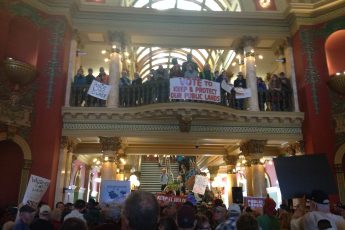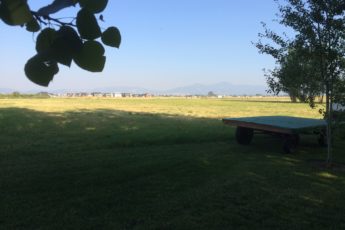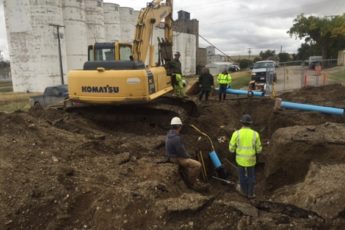Small Towns Left Paying the Tab for Local School Funding Shift
Last November, some lawmakers emerged from Montana’s Special Legislative Session crowing that they had solved the state’s budget crisis without raising taxes.
But Montanans across the state will see higher property taxes, thanks to cuts in state payments to local schools systems.
And it turns out, many smaller and rural school districts will see the most significant tax increases.
“Smoke and mirrors,” Baker Superintendent Jon Wzresinski says of the changes. He anticipates a local property tax increase to make up for the loss of funding.
“It makes it tougher for us,” he said.
The district, in Fallon County in southeastern Montana, has consistently had strong financial reserves, thanks to petroleum revenues — though both production and the price of oil have declined in recent years.
Wzresinski said the district will have to educate the public on why the increase will be needed — and not just spring it on them.
“And if the up-front education isn’t done carefully, it’s going to create hard feelings,” he said.
Baker’s remoteness means some added costs for locals. It costs more money to attract teachers, for example.
Wzresinski also understands that the state needed to make some cuts, and that everyone needs to carry some of the burden. But he disagrees on the way the final product came out. He called districts like his “low-hanging fruit” for lawmakers.
“We feel like education has taken a bigger hit than it should,” he said. “They just basically shifted the responsibility to us.”
The school in Scobey, in the northeast part of the state, is the only one left in Daniels County (population about 1,760) following consolidation and closure of the schools in Flaxville and Peerless. The budget changes mean a shortfall of about $400,000 in the Kindergarten-to-12th-grade district of fewer than 300 students. Local taxpayers will have to make it up with higher property taxes.
And the taxes, once raised, aren’t likely to go back down anytime soon, barring another major shift by the Legislature and a sudden influx of funding.
In Scobey, local taxpayers will make up a budget shortfall creates by the Montana Legislature
“We’re never going to get back to the (previous) level of state funding, at least not for several years,” Scobey Superintendent Dan Schmidt said.
Voters in the Scobey School District — and everywhere else facing the Legislature-induced increase — won’t have much say in the matter. The money, where it’s needed, will come in the form of “permissive” or “non-voted” levies, which will just show up on property owners’ tax bills without a vote from residents of the district.
So the schools will get the money they need, but some taxpayers might be less friendly toward levies or bonds on future local ballots for things like school safety upgrades or replacement of a leaky roof or for better sewer systems, roads, or jails.
“To get a voter to approve that right now might be a little difficult,” Schmidt said.
Shelby, with about 450 students altogether in its high school and elementary schools, faces another problem: A local wind farm is disputing its property tax obligation to the state, putting about $1 million in school funding in limbo in the last year-and-a-half.
That means the districts have dug into their reserves to pay the bills, in effect borrowing against the money that will be available if the state ultimately prevails in the dispute.
But if the state doesn’t prevail, it puts the community somewhat at risk for paying it back.
What’s worse, the dispute might not be resolved for five to seven years or even longer.
Superintendent Elliott Crump says the community has always supported schools, passing levies when asked.
Still, he’s not sure the district will have to raise taxes. It’s already been running a tight ship; its student population has gone down a bit over the last several years, and the number of teachers has dropped from 45 to 39 (through attrition and retirements, without any layoffs.) The students who remain are concentrated more in town and less on outlying areas, reducing bussing costs.
Ironically, if the wind farm didn’t exist at all, the state would be stepping in and paying more; but now, it recognizes even the disputed tax burden as part of the local tax base. Crump has been engaged with his local lawmakers to try to fix the situation.
“I hope to be active in the Legislative session next time around,” he said.
The budget action by the Legislature has led to other cuts in services around Montana including the closure of rural offices that help people in poverty, or payments to those who take care of the developmentally disabled, mental health services and more
The Legislature is set to meet next in 2019.
-Sanjay Talwani
Feature photo of Longfellow Elementary in Baker courtesy Carroll Van West, montanahistoriclandscape.com,
Got something to say to Prairie Populist? Send news tips, story ideas and comments to [email protected]. If you have something to submit, or an idea for a story you’d like to write for us, check out our Submission Guidelines here.



